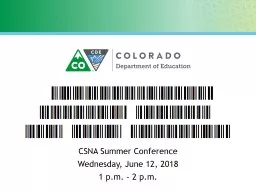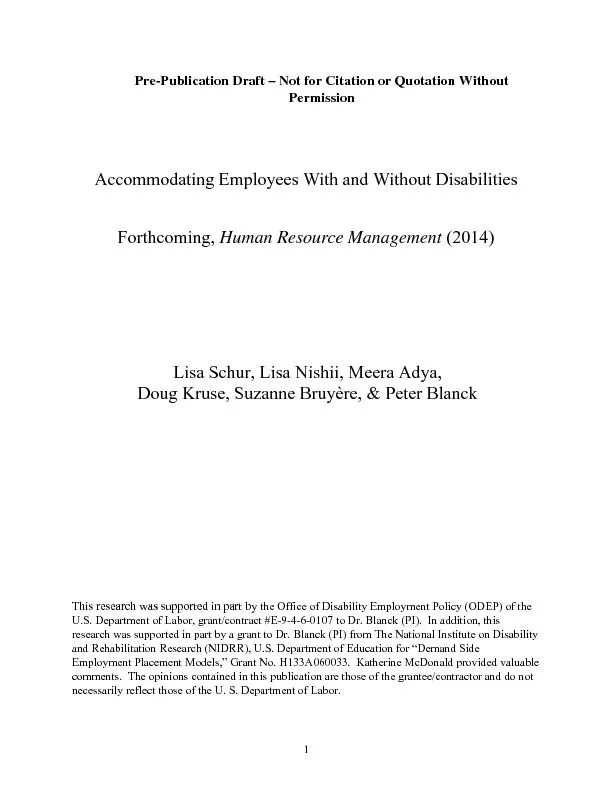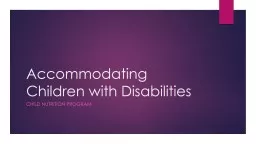PPT-Accommodating Special Diets: The Team Approach
Author : ellena-manuel | Published Date : 2020-01-03
Accommodating Special Diets The Team Approach CSNA Summer Conference Wednesday June 12 2018 1 pm 2 pm Together We Can Colorado Department of Education Vision All
Presentation Embed Code
Download Presentation
Download Presentation The PPT/PDF document "Accommodating Special Diets: The Team Ap..." is the property of its rightful owner. Permission is granted to download and print the materials on this website for personal, non-commercial use only, and to display it on your personal computer provided you do not modify the materials and that you retain all copyright notices contained in the materials. By downloading content from our website, you accept the terms of this agreement.
Accommodating Special Diets: The Team Approach: Transcript
Download Rules Of Document
"Accommodating Special Diets: The Team Approach"The content belongs to its owner. You may download and print it for personal use, without modification, and keep all copyright notices. By downloading, you agree to these terms.
Related Documents














